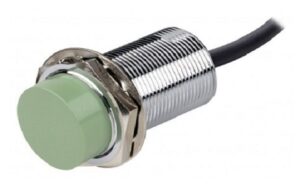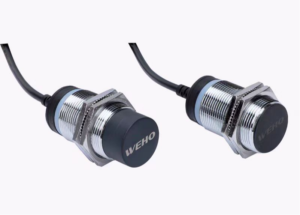In the fields of automation and industrial control, detecting metal objects is a common requirement. Whether it’s for object positioning, counting, or safety interlocks, inductive proximity sensors are widely used for their reliability and non-contact detection capabilities.

A frequently asked question from engineers and technicians alike is:
Can an inductive proximity sensor detect aluminum?
The short answer is yes. Inductive sensors operate based on a material’s electrical conductivity, not its magnetism. That means they can detect both ferrous (iron-based) and non-ferrous metals like aluminum. However, one key consideration is that aluminum’s detection range is significantly reduced when compared to materials like mild steel.
Let’s explore why.
Aluminum: Conductive but Non-Ferromagnetic
Key Properties of Aluminum

Aluminum is a lightweight, non-ferrous metal with excellent electrical conductivity, making it a suitable target for inductive proximity sensors. However, it lacks ferromagnetic properties, which means it does not react to magnetic fields in the same way steel or iron does.
Aluminum vs. Ferromagnetic Metals
Ferromagnetic metals like iron and steel concentrate magnetic fields, which enhances the sensor’s ability to detect them at a longer range. In contrast, aluminum does not channel magnetic fields, resulting in a weaker interaction with the sensor’s magnetic field.
Not All Metals Are Detected Equally
Inductive proximity sensors are typically calibrated using ASTM A36 mild steel as the standard target. When detecting aluminum, only about 40% of the rated sensing distance is achieved under normal conditions. This doesn’t mean detection is unreliable—it just means shorter sensing distances must be taken into account during installation.
Why the Reduced Sensing Distance?
The reduced sensing range when detecting aluminum is due to several physical principles:
| Factor | Aluminum Behavior |
|---|---|
| Magnetic Permeability | Low – doesn’t concentrate magnetic fields like steel |
| Eddy Current Loss | Weaker eddy currents – less sensor feedback |
| Skin Effect | Stronger in thin foil (<0.1 mm) – can enhance detection in high-frequency applications |
-
Lower magnetic permeability: Aluminum does not reinforce the magnetic field emitted by the sensor, unlike steel.
-
Eddy current loss: Inductive sensors work by inducing eddy currents in a conductive target. Aluminum generates weaker eddy currents compared to steel, which translates to weaker sensor feedback.
-
Skin effect: In very thin forms—like aluminum foil thinner than 0.1 mm—aluminum can actually behave as an excellent target. This is due to the “skin effect,” where high-frequency currents concentrate at the surface of a conductor, increasing interaction with the sensor’s magnetic field.
Conclusion
So, can an inductive proximity sensor detect aluminum?
Yes, it can—but with limitations. While inductive proximity sensors are fully capable of detecting aluminum, they do so at reduced sensing distances compared to ferromagnetic metals. Understanding this limitation is key to selecting the right sensor and designing a reliable detection system.
For critical applications involving non-ferrous materials, consider using universal or non-ferrous metal-specific sensors to ensure consistent and accurate detection.









